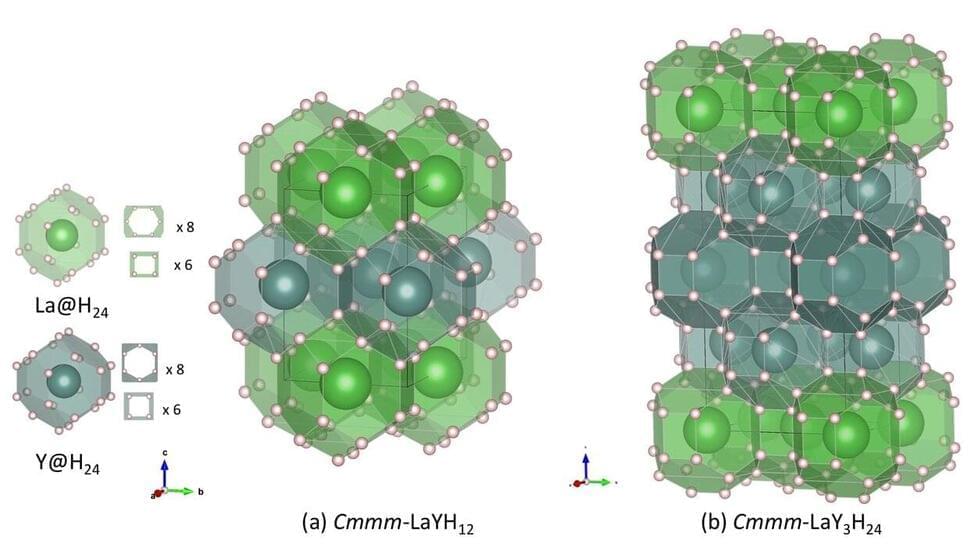Superconductivity is the disappearance of electrical resistance in certain materials below a certain temperature, known as “transition temperature.” The phenomenon has tremendous implications for revolutionizing technology as know it, enabling low-loss power transmission and maintenance of electromagnetic force without electrical supply. However, superconductivity usually requires extremely low temperatures ~ 30 K (the temperature of liquid nitrogen, in comparison, is 77 K) and, therefore, expensive cooling technology. To have a shot at realizing a low-cost superconducting technology, superconductivity must be achieved at much higher transition temperatures.
Materials scientists have had a breakthrough on this front with crystalline materials containing hydrogen, known as “metal hydrides.” These are compounds formed by a metal atom bonded with hydrogen that have been predicted and realized as suitable candidates for achieving even room-temperature superconductivity. However, they require extremely high pressures to do so, limiting their practical applications.
In a new study published in Chemistry of Materials, a group of researchers led by Professor Ryo Maezono from Japan Advanced Institute of Science and Technology (JAIST) performed computer simulations to expand the search for high-temperature superconductors, looking for potential candidates among ternary hydrides (hydrogen combined with two other elements).
